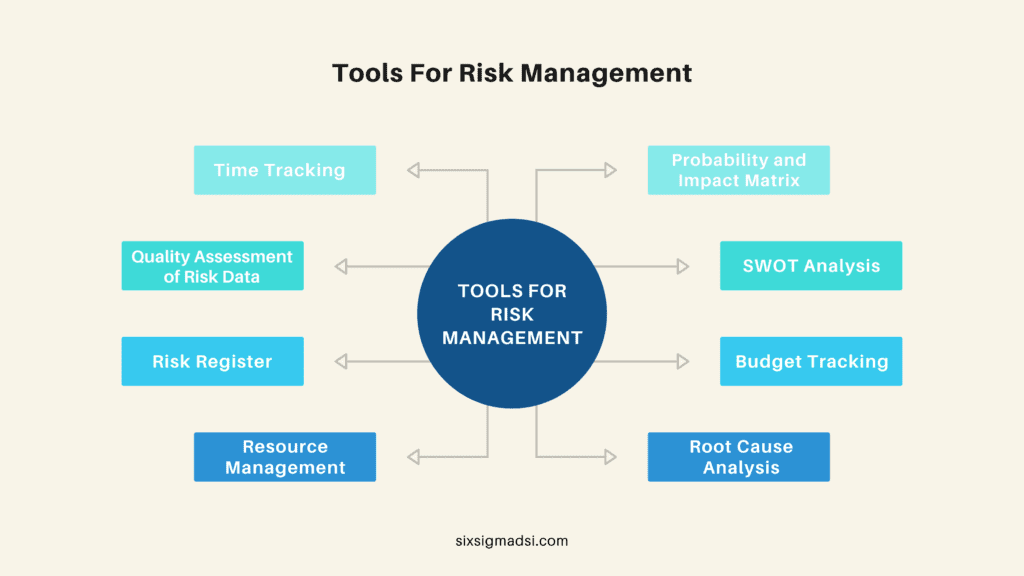Table of contents
The Best Risk Management Tools
Every project undertaken by an organization involves some level of risk. Companies that do not include risk in their Project Management strategies are more likely to miss the deadline for their projects. It is for this example that planning for risks is a crucial part of Project Management, and Risk Management tools are in place. Only 27% of organizations are able to say that risk management is used ‘always” in their projects, while 35% only use it sometimes.
There are some tools and techniques that organizations can use as part of their project management process to manage risks successfully.
What is Risk Management?
Risk Management is identifying, understanding, and responding to potential factors which could lead to a project being delayed or failing. Many companies create strategies to reduce risks, such as:
- Technology issues
- Financial uncertainties
- Legal Liabilities
- Natural disasters
You can examine the potential impact of all risks on your strategic goals by using risk management programs. Risk management tools can be used to account for costs and time that may affect the timeliness and quality of a project. You can create measures for a successful project outcome.

Top 10 Tools For Risk Management
Tools for risk management can be used to address uncertainty. These tools generate and identify data that can be used to analyze, prioritize, respond to, and track risks. You can use the following risk management tools when developing and implementing your project:
1. Time Tracking
These programs allow you to: These programs allow you to:
- Enter the task, its deadline, and any other relevant information to ensure transparency.
- Remind your team what they are working on and when the project is due.
- Find out how fast team members are completing each task.
This tool allows team leaders to decide how much time they need to complete tasks that are taking longer than expected.
2. Quality Assessment of Risk Data
This tool allows you to evaluate the risks associated with your project and their relevance. It can provide you with information that will help you understand risks such as:
- Accuracy
- Reliability
- Quality
Assess the risks that your project may face and create a clear plan to deal with them.
3. Risk Register
A risk register controls the potential risks that you might encounter in a project. This tool documents, collects, and monitors risk. This tool may help you strategize, and then respond proactively to the challenges. It can also help you deliver projects within budget and on time. This tool allows you to:
- Prioritize risks
- Assigning team members to solve these risks
- Updates and notes on the progress of risk resolution
4. Resource Management
Many organizations use resource management tools in order to determine if their teams are capable of taking on unexpected or new tasks. These platforms can be accessed as dashboards, which provide information about team members.
- Schedules
- You can also learn more about
- Availability
This tool can be used to determine which employees are available and have the knowledge necessary to complete a task on time in case of an unexpected event.
5. Probability and Impact Matrix
You can use the matrix to prioritize risks based on your knowledge of their impact on a project. This technique involves adding up the probability and impact scores of each risk, and then ranking them according to their severity. This technique helps you to put the risk into context and create mitigation plans that save time and make efficient use of resources.
6. SWOT Analysis
SWOT analysis allows you to review the project’s opportunities, threats, and weaknesses. Strengths and Opportunities are positive aspects that can increase the chances of completing high-quality work on time and in budget. Weaknesses are areas that need improvement. Negative risks can be caused by threats, such as external factors or restrictions. Use the strengths and opportunities of a project in order to create proactive plans and solutions.
7. Budget Tracking
Budget tracking is a financial tracking tool that has the main function of predicting future expenditures and comparing them to the amount the project will require at the end. Reporting dashboards are often included.
- The total budget of a project
- Spending so far
- The remaining amount
This tool can be used to assess how well your team adheres to the budget. You can also use it to make provisions for contingency measures and reserve funds to minimize risk.
8. Root Cause Analysis
The root cause analysis is an important risk management tool. It helps to address the causes of a problem rather than focusing only on its symptoms. The root cause analysis provides answers to questions such as:
- What happened?
- Why did this happen?
- How did this happen?
It is possible to develop a plan to prevent making the same mistakes in the future. This will be a proactive and responsive approach to risk management.
9. IT Risk Assessment Templates
This tool was originally developed for IT projects. However, it can be used by project managers to assess risk in any project. The tool offers a list with numbers to categorize each risk, as well as a chart with other factors that should be noted, such as:
- Topic
- Control environment
- Control activities
- Prior Assessments
- Likelihood
- Impact
- Risk level
These tools often include an integrated calculator which can calculate the likelihood of a risk, and multiply that by the impact potential to determine a final level of risk. You can compare risks to decide what to prioritize.
10. Reserve Analysis
The reserve analysis helps project managers determine how much money to set aside for contingencies before the project starts. The money can be used to cover any unexpected costs that may arise during a project. This reduces the possibility that a delay or challenge could have a major impact on the overall budget of a project.

Why is Risk Management Important?
It is essential to learn how to manage risks so that you can develop solutions for potential challenges in project management before they occur. You can also use it to audit and review a project. A good risk management strategy can help you minimize the impact of risks on overall project performance, and increase your chances of delivering quality projects on time.
Risk management has many other benefits, for example:
- Benefits to the financial side: Tools and techniques for risk management help reduce losses and detect events that occur frequently. Risk management can be integrated with schedule and cost planning to reduce time and costs.
- Safety: By implementing risk assessment and management, you can provide security to your staff and customers as well as prepare for unplanned events. Plan for all possible risks. Evaluate plans to manage threats, and create structures to deal with them.
- Effective risk management can improve operational efficiency by streamlining tasks. You can then use the time and energy spent on reporting incidents, or unexpected events, in other areas.
- Communication: Since most projects use centralized information, teams, and other parties must discuss and analyze reports in order to resolve potential conflicts. Encourage proper communication between members to create positive working relationships.
- Decision-making: Many projects require making critical decisions that will affect the future success of a business. Risk management data and analytics can be used to incorporate risk into your strategy, achieve organizational goals and objectives, and stay profitable.
Do you have any tips on how to use risk management?
Leave them in the comments below!



















